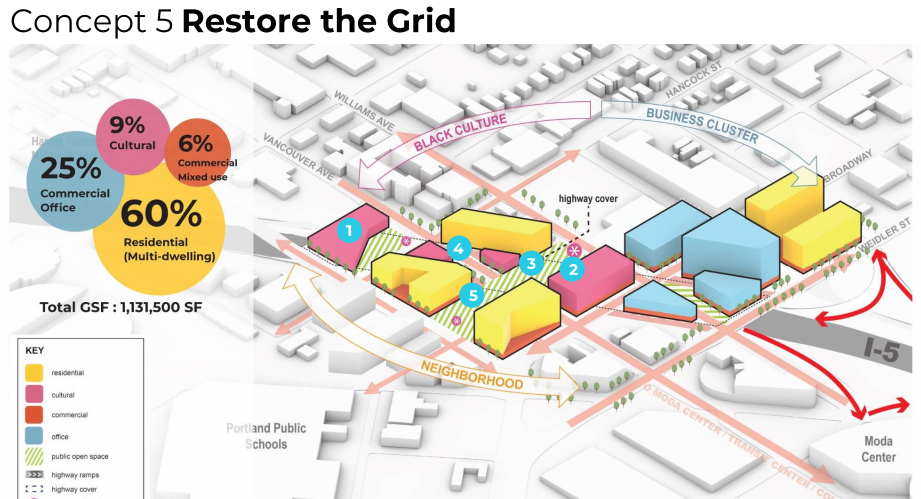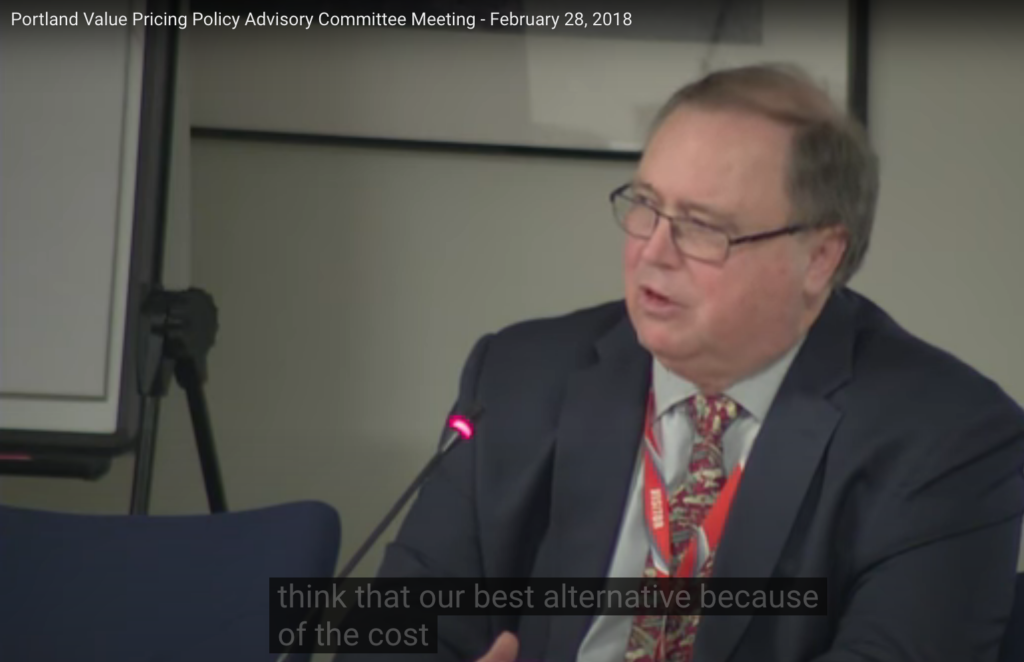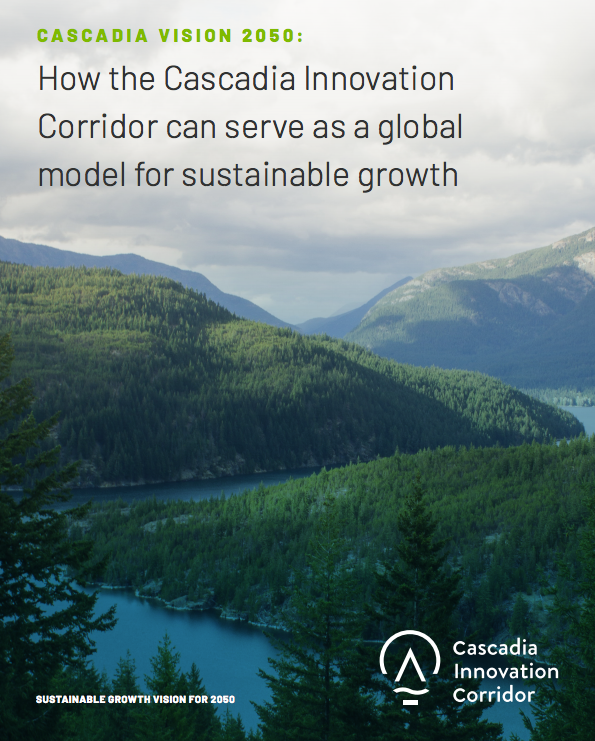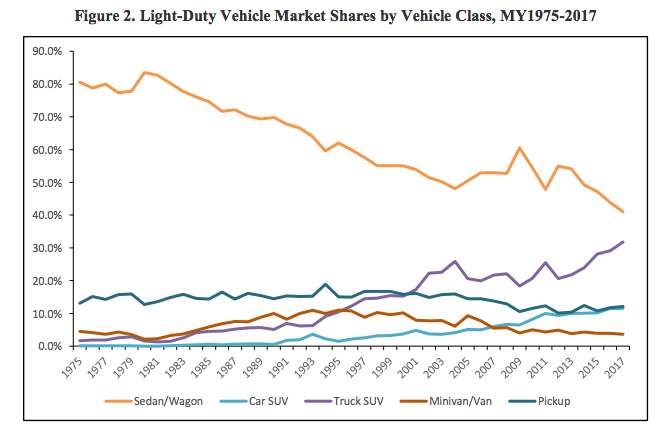What City Observatory this week
1. Restorative justice without funding is a sham. Portland’s Albina neighborhood was decimated by the construction of three Oregon Department of Transportation highway projects in the 1950s, 1960s and 1970s, causing the neighborhood’s population to drop by more than 60 percent. Part of the marketing pitch for the current effort to spend $800 million to widen the Interstate 5 freeway through the neighborhood is claims that it will contribute to “restorative justice.” That’s a dubious claim to be sure. Work prepared by project consultants shows that the proposed freeway covers are too small and too swamped by traffic to be of any value. These consultants have developed some other development alternatives which show what a more restorative approach would look like. Unsurprisingly, they hinge on building lots of housing to replace that demolished by the freeway. On this diagram, the yellow buildings are imagined new housing.
And “imagined” is really the correct description, because nothing in the I-5 freeway widening project actually includes funding for this housing. Just building the five yellow boxes on this chart would cost between $160 million and $260 million. That’s a noble goal, but without funding, its meaningless. True restorative justice has to be more than colorful illustrations showing imaginary buildings; it has to be a tangible commitment of real resources.
2. Pricing would fix traffic congestion in Portland’s Rose Quarter without widening the freeway. The I-5 Rose Quarter project would spend $800 million to widen the freeway to as many as ten lanes. But according to ODOT’s own consultants you could achieve all of the congestion reduction benefits of ODOT’s proposed widening without spending a dime on construction. The 2017 Oregon Legislature directed ODOT to implement congestion pricing on Portland area freeways.
3. Why “new towns” aren’t the way for Cascadia to promote sustainability. We’re pleased to publish a guest commentary from Ethan Seltzer taking a close look at a proposal to direct the Pacific Northwest’s future population growth into a series of satellite cities 40 to 100 miles from the established population centers of Vancouver, Seattle and Portland. This “new cities” proposal for regional growth comes from a tech group called the “Cascadia Innovation Corridor.”
As Seltzer points out, the idea of shifting growth out of established cities is a reprise of a historical theme from a century ago. The idea that one can minimize or avoid the perceived problems of existing cities by building new ones hasn’t panned out in practice.
Must read
1. Let’s not give the streets back to cars. Janette Sadik-Kahn and Seth Solomonow, co-authors of Streetfight, have an Atlantic article arguing that cities ought to capitalize on, rather than retreat from the reclamation of street space that occurred during the pandemic. Across the country, cities have taken space that was used for car storage or movement, and re-dedicated in cycling, walking, dining and other, more human-scaled uses.
To serve their residents well, U.S. cities can’t just return to the pre-pandemic norm. They need to come back more resilient, more sustainable, more economically connected, and more equitable. Reclaiming city streets from the domination of cars is never easy, but it will never be easier than it is right now.
While cities used the pandemic to re-think many long held assumptions about how to design urban spaces, there’s powerful auto-centric inertia coded into the legal and regulatory framework. For example, the federal governments manual for street design makes it hard for cities to enable more active uses of local streets.
2. Has the hot housing market convinced people we need to increase supply? Writing at Slate, Henry Grabar recites tales of the frothiness of the current housing market, with prospective homebuyers in many cities being repeatedly out-bid as housing prices spike. The palpable frustration with short supplies and rising prices, Grabar speculates, may finally convince people that we need housing policies that increase housing supply. The housing policy debate has been characterized by denial and urban myths (that vacant condos owned by speculators are the cause of the shortage). Grabar hopes that those who are getting outbid for housing will be radicalized and active:
But for every winner there will be many losers, and maybe the process can radicalize these would-be buyers, and their friends, and their parents, and the people they talk to. There really aren’t enough places to live. Those people can channel their frustration with bidding wars into political activism aimed at housing suppressants like parking requirements, restrictive zoning, and density limits. If appeals to neither historical wrongs nor economic growth get the job done, a strong dose of self-interest can’t hurt.
New Knowledge
How SUVs made our climate problems much worse. In the past two decades, Americans have bought fewer and fewer cars. The bad news, of course, is that we’re buying and driving far more trucks and sport utility vehicles (SUVs). Our energy and air quality policies have been counting on a “technical fix” to cars, in the form of fuel economy standards, with the idea that progressively more efficient vehicles would reduce energy consumption, pollution and greenhouse gas emissions.
But there’s been a kind of “rebound” effect, where rather than continuing to buy the same mix of vehicles, consumers have been buying larger, heavier and less fuel efficient trucks and SUVs.
The problem with SUVs is not just their fuel economy, however. They stay in the vehicle fleet longer, with 32.4% of them still on the road after 20 years, compared to just 15.7% for cars (US EPA, NHTSA, and California Air Resources Board, 2016). Kovach 8 Drivers also use them more; average lifetime VMT is 18.3% higher for SUVs (US Department of Transportation, 2006).
The net effect of the additional truck and SUV purchases has been to increase fuel consumption and greenhouse gases, compared to a world where the the passenger car market share state stable. The report estimates that the shift to SUVs and light trucks will produce 867-3,519 million short tons of greenhouse gases across their lifetimes, compared to alternative scenarios. Collectively, this emissions increase is enough to enough to offset 19-75% of the projected savings from the model year 2011-2025 CAFE standards
Tim Kovach, The rise of SUVs in the US and its impact on greenhouse gas emissions from 2000-2017, April 2021. DOI:10.13140/RG.2.2.10190.5920





